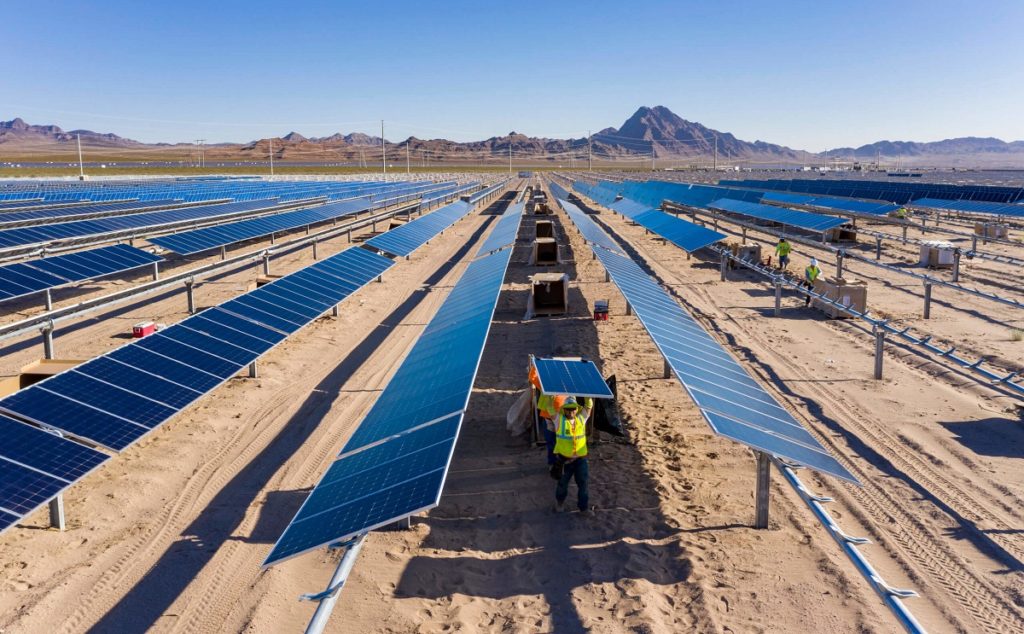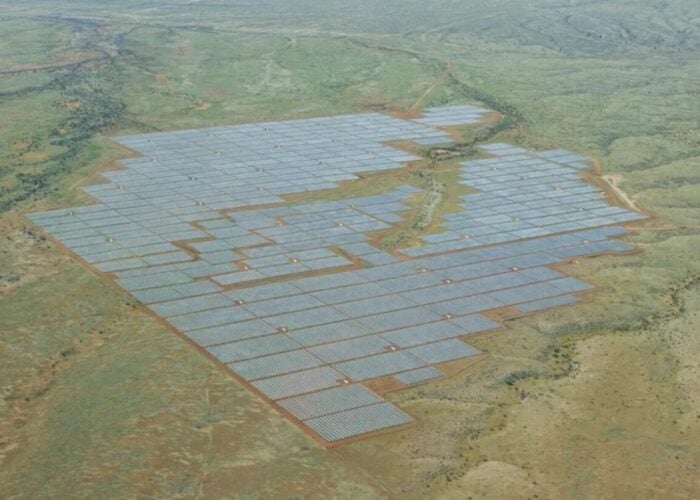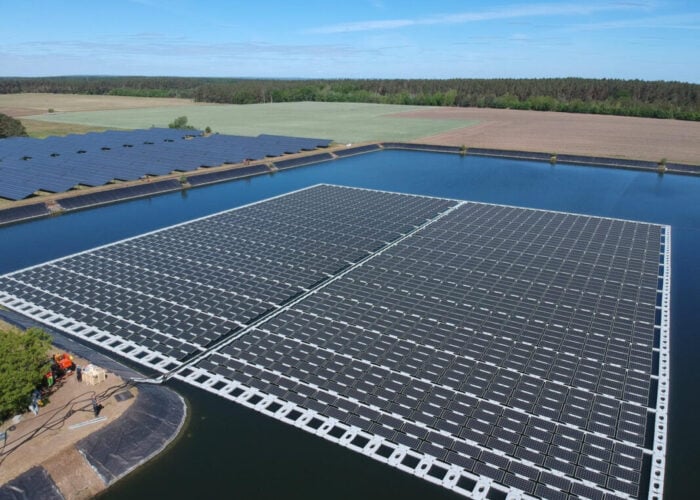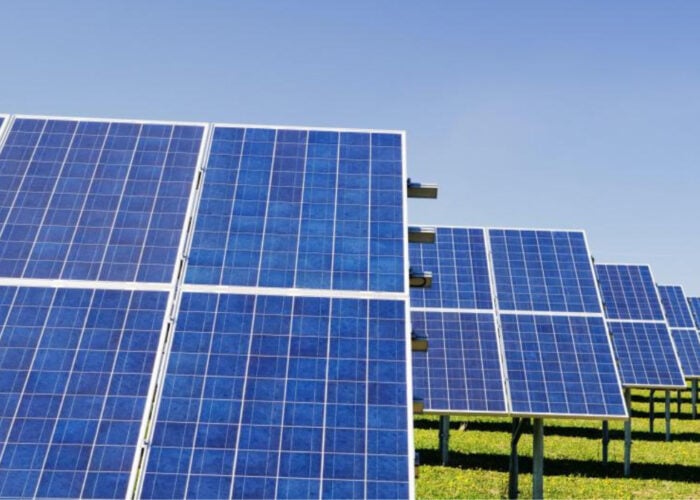
Last week the US Department of Energy (DOE) released its Solar Futures Study, an analysis conducted by the department’s National Renewable Energy Laboratory to determine the full extent of the role solar PV can play in the US’ power system out to 2035.
The results of the study are compelling: solar could provide upwards of 40% of the nation’s power by 2035, but would require installs to quadruple by the end of this decade and accompanying technologies to mature alongside it.
Unlock unlimited access for 12 whole months of distinctive global analysis
Photovoltaics International is now included.
- Regular insight and analysis of the industry’s biggest developments
- In-depth interviews with the industry’s leading figures
- Unlimited digital access to the PV Tech Power journal catalogue
- Unlimited digital access to the Photovoltaics International journal catalogue
- Access to more than 1,000 technical papers
- Discounts on Solar Media’s portfolio of events, in-person and virtual
The full study, however, paints a more complex picture, that of uncertain technology trajectories, the need for approaches to the grid to evolve too and, more significantly, for policymakers in the country to act now.
Downstream: Terawatts of PV, a stronger solar workforce and modern grids
The study details three core scenarios under which the US power system will decarbonise, with solar playing a lesser or greater role in those models. The DOE’s ‘Reference’ case reflects a business as usual policy environment, where there is some decarbonisation, but the power system is not carbon-free by any stretch of the imagination. Even in this base case, solar PV deployment increases seven-fold by 2035.
The more interesting for solar – and therefore for this analysis – models are the study’s ‘Decarb’ and ‘Decarb+E’ scenarios, which reflect far more extensive decarbonisation of the country’s power supply and, in the latter, considerable electrification of hard to abate industries such as heavy transport, which in turn increase electricity demand.
Both models are typified by more aggressive cost reductions of solar PV, with deployment skyrocketing as a result.
By 2030, the Decarb and Decarb+E models find that between 720GW and 1TW of solar will be installed respectively, generating between 37 – 42% of the country’s power demand. By 2050 this grows further, to between 1,050GW and 1,570TW, equivalent to 44 – 45% of total power demand. What neither model necessarily accounts for is more broader electrification and decarbonisation posed by emergent industries such as green hydrogen, which could, at least in theory, grow the US’ operational solar base to 3.2TW by 2050.
This proliferation of solar will be delivered cheaply and efficiently, the DOE says, striking down the continued claim that net zero is too expensive to entertain. The study’s findings demonstrate that electricity prices in the US will not increase as solar proliferates providing targeted improvements in technology are achieved.
Using the Reference case as a base, the DOE’s study shows that its Decarb scenario is just 10% more expensive, equivalent to an extra US$225 billion spent. Furthermore its Decarb+E scenario is roughly 25% more expensive, or an extra US$562 billion. While those figures may indeed seem expensive, the alternative – essentially climate-related destruction – would cost significantly more. The DOE’s analysis states that the benefits to air quality and avoided climate crises amounts to savings of between US$1.1 – 1.7 trillion.
Employment within the sector would also soar, from an estimated figure today of 230,000 to between 500,000 and 1.5 million by 2035, depending on the rate of solar installation in those preceding years.
Downstream solar deployment and operation will not be without its challenges, however. There is a risk that as initial investment costs remain high, the transition towards a more solar-heavy grid risks leaving low-income areas and neighbourhoods behind, unduly shouldering them with higher costs, exacerbating the problem further. The US government should therefore ensure that decarbonisation is more equitable than has been achieved to date, with low-income areas aided. This extends further to ensure that project siting and asset recycling or disposal is not conducted solely on lands nearer to poorer groups.
But unquestionably the biggest challenge to the DOE’s 2035 solar vision is the grid, or more specifically the adaptation of the grid as we understand it today. The proliferation of weather-dependent, inverter-based energy resources (IBRs) – as the study determines solar to be – will change the very nature of how the grid is viewed. The grid of the Decarb and Decarb+E studies will require new approaches to system reliability, utilising the quick response inherent within IBRs to respond to system changes and events. Residential solar, especially installs paired with energy storage, are ideal in shaping that response, enabling the development of more microgrids and local energy communities.
Upstream: evolving technology, domestic manufacturing and solar’s circular economy
Further upstream, advances in solar technologies, more complete manufacturing and operation chains – including end of life provisions – and a more geographically diverse manufacturing base all form part of the DOE’s vision.
While solar PV has continued to evolve as an asset class and technology, for it to contribute to a future grid in the US it must continue along this trajectory, the DOE has said, and surpass the maximum cell/module efficiencies and yields seen today. With solar PV rapidly approaching the theoretical limit for standard mono-PERC subsets, the Solar Futures study centres its vision around the transition to n-type cells, bringing into play TOPCon, heterojunction and interdigitated back contact (IBC) cell-level technologies, as well as the thin film solar CdTe class.
Perhaps predictably – and sagely given the unpredictability of solar technology development – the DOE has not backed any particular technology in this regard. This is left very much in the hands of the industry, however the report does make it clear that module-level efficiency improvements through areas such as enhanced metallisation pastes and approaches to module design will also have a role to play.
Perovskite solar cells are also mentioned as a potential challenger to more mainstream solar cell technologies, especially given their cell efficiency advantages over c-Si cells, but challenges over long-term durability very much bring the technology back down to earth.
The actual manufacture of cells and modules, or more specifically, the domestic manufacture of components in the US, is discussed against a backdrop of much action politically and from a legislative angle. Whether it be the withhold release order on imports linked to Hoshine, a possible extension of Section 201 tariffs or recent petitions to extend them to Southeast Asia-based subsidiaries, the future of module supply to the US remains in question.
There are efforts afoot to incentivise more solar manufacturing in the US which, the study suggests, could indeed help mitigate supply disruption in the future. But the report is also quick to stress that such manufacturing centres face significant challenges in becoming cost-competitive with those based in other regions, most notably in China, where the supply chain is far more established and, as the study subtly puts it, is not impacted by more rigorous labour provisions.
While the report stresses that increased automation in the manufacturing process and the creation of more solar components (i.e. polysilicon, ingots, wafers) domestically could indeed help reduce costs, US-based manufacturing is unlikely to be as cheap as elsewhere. It pulls into thought the below tweet from BloombergNEF’s Jenny Chase from last month:
EU, the U.S.: we want to have a domestic solar manufacturing industry
— Jenny Chase (@solar_chase) August 17, 2021
Solar analysts, who have spent years covering bankruptcies, bad debts, heavy losses, factory obsolescence and dodgy spinouts in the ever-changing roster of biggest solar manufacturers: but… why
One positive from the report is the conclusion that there will be no shortage of materials, at least in the context of limiting solar growth. It might not be enough to ease the concerns of those currently in the market for polysilicon or solar wafers and cells, but through the 2020s and 2030s solar PV will not be limited by material availability. Instead, the study discusses measures which could “enhance” the circular economy surrounding solar PV, such as technological advances which could aid the reuse and recycling of materials used in the PV manufacturing process such as silver, and greater participation from the solar community in recycling schemes.
The DOE’s study illustrates how, broadly speaking, the US can transition towards a solar-heavy grid, with a more diverse, technologically-advanced portfolio of solar generation assets becoming the leading source of power in the country. While there remain challenges and hurdle to surpass, the Solar Futures Study makes it abundantly clear that these are eminently solvable.
In a sense, the study makes it abundantly clear that solar is limited not by its own technological limits, cost or readiness of legacy systems to accommodate it, but by state and federal policymakers. Perhaps the strongest conclusion the report makes is that long-term policy and market support are required for solar PV to fulfil the potential documented within.
With a flurry of activity in Washington D.C. taking shape, it is very much the actions of President Joe Biden, at least in the short term, that determine what US solar will look like in 14 years’ time.






